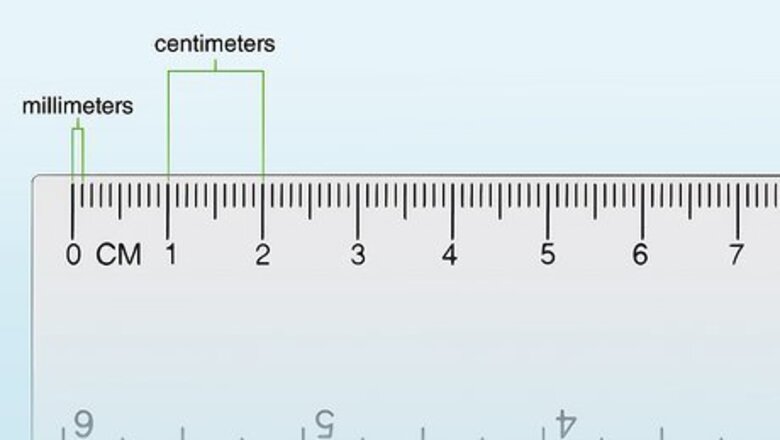
views
- A millimeter is a unit in the metric system, which also includes centimeters and meters. There are 1,000 millimeters in 1 meter, and 10 millimeters in 1 centimeter.
- To measure in mm, hold a metric ruler against an object, count the number of whole cm of its length, and multiply by 10. Then add the remaining mm for the full length.
- To convert cm to mm, multiply the cm measurement by 10. For meters to mm, multiply by 1,000. For inches to mm, multiply the measurement in inches by 25.4.
Using a Metric Ruler
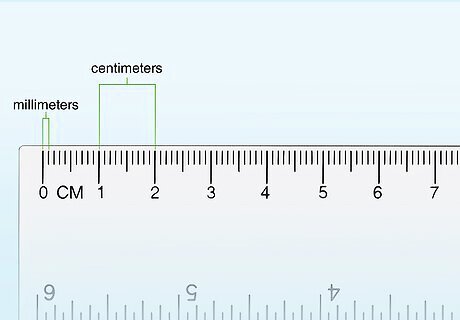
Look at the unmarked lines on a metric ruler. There are 2 separate units of measurement on a standard metric ruler—centimeters and millimeters. The numbered lines correspond to centimeters, while the unmarked lines indicate millimeters. If you look closely, you’ll notice that there are 10 millimeters in a centimeter. The medium-sized line at the halfway point between each numbered centimeter measurement represents half a centimeter, or 5 millimeters. This same labeling scheme is also used on longer metric measuring tools, such as meter sticks and tape measures.
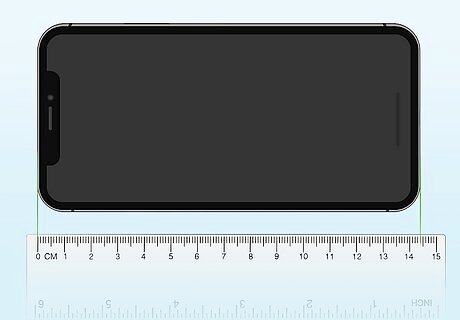
Line up the end of your ruler with the object you want to measure. More specifically, place the line marked “0” up against the far edge of your object. Make sure the ruler is straight and neatly aligned with your starting point. If you’re trying to find out how long your smartphone is in millimeters, you would arrange your ruler so that the “0” marking is even with one of the device’s horizontal edges. Not all rulers have “0”s printed on them. If the one you’re using doesn’t, it’s safe to assume that the end of the ruler to the left of the “1” indicates “0mm.”
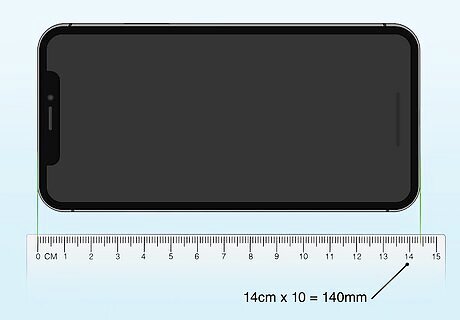
Multiply the cm measurement just before the end of your object by 10. Note the number of the last full centimeter measurement. Multiplying this number by 10 will convert the unit of measurement to millimeters and tell you how long your object is in millimeters up to this point. If the last full centimeter measurement reads 1, multiplying it by 10 would give you 10, since 1cm = 10mm.Tip: One quick and easy way to multiply by 10 when you’re working with integers (whole numbers) is to simply tack a “0” onto the end of the number.

Add the number of lines after the last centimeter mark. Count up how many unmarked lines there are beyond the end of your object. The reason this is necessary is that there aren’t enough millimeters to account for another full centimeter. Using the centimeter measurement to quickly calculate the bulk of the object’s length in millimeters makes things easier. You can also measure one centimeter past the end of your object and then subtract the number of millimeters in between. For example, 2 centimeters (20 millimeters) minus 5 millimeters equals 15mm.
Converting Other Measurements
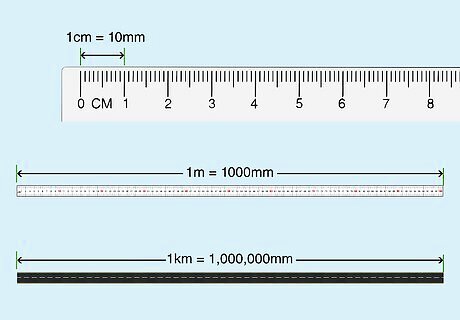
1 cm = 10 mm, and 1 meter = 1000 mm. There are 10 millimeters in 1 centimeter. To convert from centimeters to millimeters, multiply centimeter measurements by 10. Similarly, there are 1,000 millimeters in 1 meter. To convert from meters to millimeters, multiply meter measurements by 1,000. For example, if you have a measurement of 5 cm, the length in mm equals 5 x 10, or 50 mm. For a measurement of 21 meters, the length in mm equals 21 x 1,000, or 21,000 mm.
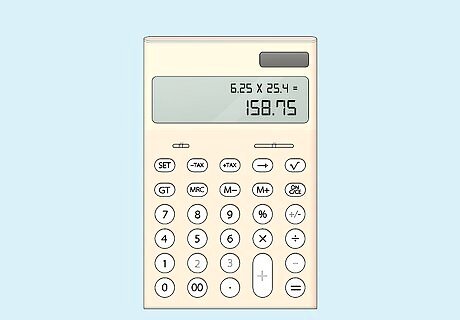
Multiply inch measurements by 25.4 to find their length in millimeters. You may need a calculator for this one. Start by entering your inch measurement up to 2 decimal places (as in “6.25”). Then, hit the “x” button and punch in “25.4,” as there are roughly 25.4 millimeters in 1 inch. When you hit the “=” button, the number you get will be the same measurement, only in millimeters. Using the formula described above, 6.25 inches is equal to 158.75 millimeters.Tip: It should be fine to limit your final measurement to the numbers on the left side of the decimal point. If you need to be extra precise, round off to the nearest hundredth of a millimeter (the second number after the decimal).
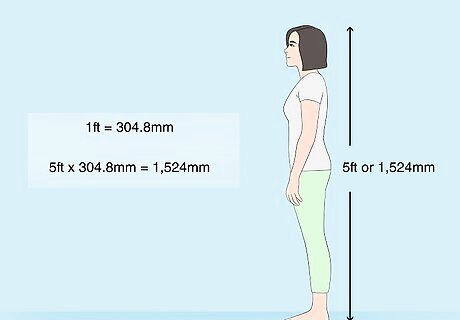
Multiply measurements in feet by 304.8 to convert to millimeters. The idea here is the same as converting inches to millimeters. There are approximately 304.8 millimeters in an imperial foot, so multiplying the total number of feet by 304.8 will help you determine how long it is using the smallest metric unit of measurement. If you’re 5 feet tall, you would be 1,524 millimeters tall. That sounds a lot more impressive!
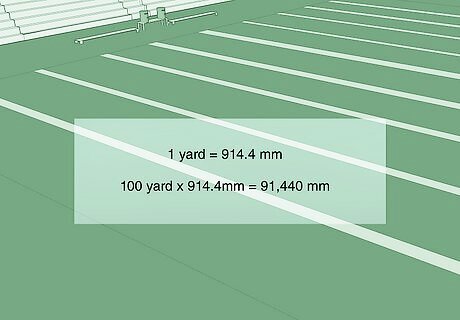
Multiply measurements in yards by 914.4 to convert to millimeters. Nothing new here. 1 yard is equal to about 914.4 millimeters. As a result, multiplying a yard measurement by 914.4 will instantly turn it into a millimeter measurement. The same basic principle that makes it possible to convert inches and feet to millimeters also applies here. There are 12 inches in 1 foot, so 12 x 25.4 = 304.8; a yard has 3 feet, so 304.8 x 3 = 914.4, and so on.
Estimating Millimeters with a Credit Card
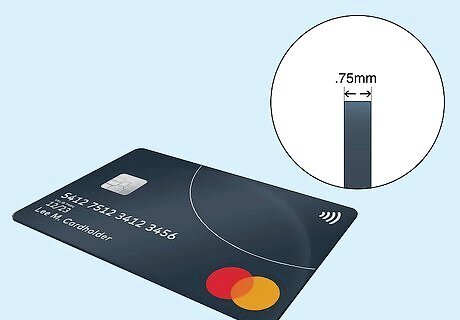
Grab a normal credit card or plastic ID card. Credit cards (and other types of plastic cards) have a thickness of roughly 0.76 millimeters. While this isn’t exactly 1 mm, it’s close enough for roughly measuring lengths in millimeters. If you don’t have a credit card handy, stack 10 sheets of 8 ⁄2 in (22 cm) x 11 in (28 cm) printer paper on top of each other to get a layer that’s about 1 millimeter thick. This may be harder to work with than a single plastic card, though. Warning: Since this method isn’t very exact, you shouldn’t rely on it when the precision of the measurements you’re taking is important.
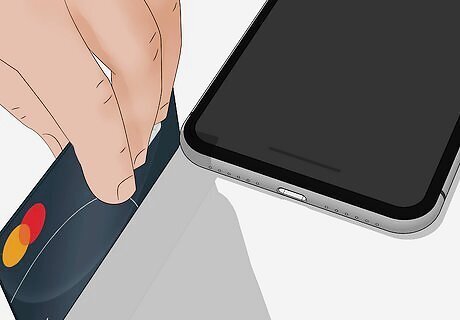
Stand the card up on a piece of paper next to what you’re measuring. Align the outer edge of the card with your chosen starting point on the object. Imagine that the card is a ruler, and that the edge is the 0mm line.
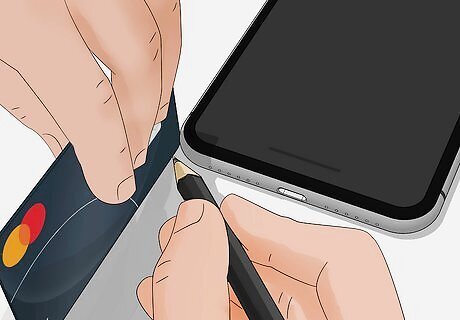
Use a pen or pencil to draw a thin line along the inner edge of the card. Run the tip of your writing utensil down the card to trace a line long enough to be clearly visible. This marks a distance of 0.762 millimeters between the end of the object and your first line. Use light pressure to make the line as thin as possible. Sharpen your pencil or use a pen with an ultra-fine point.
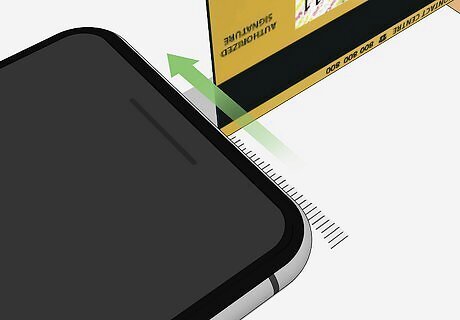
Slide the card down to the other side of the line and repeat the process. This line will be 1.52 millimeters from your starting point. Reset your card on the far edge of your second line and draw another. Continue measuring and marking in small increments until you reach the end of the object, then count up the number of individual spaces. Make sure you count the spaces between the lines, not the lines themselves. To increase precision, count every 4 lines as 3 millimeters total. This will account for the fact that the card is a bit less than 1 mm thick.




















Comments
0 comment